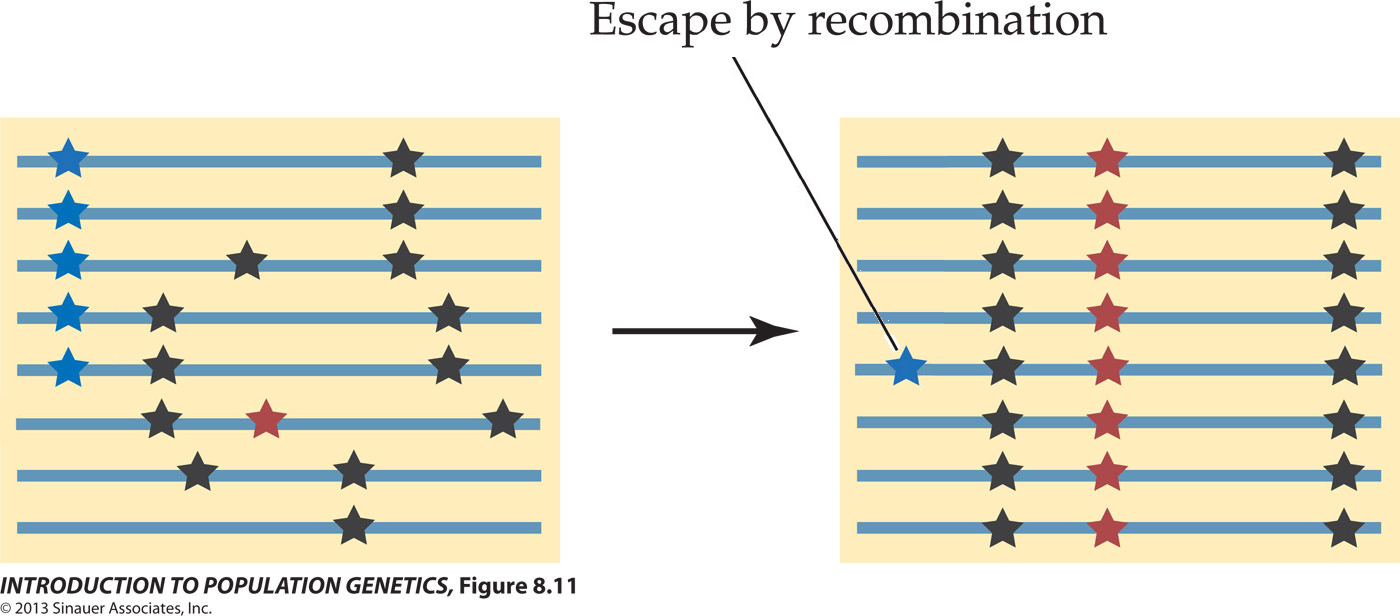
Selective sweep of a novel advantageous mutation:
Hitchhiking of a linked neutral SNP
As previously shown, a new mutation (SNP) in #6
confers a strong selective advantage and rapidly
replaces the others in a selective
"sweep".
Ordinarily this would eliminate the existing blue SNP. However, if
during the sweep, recombination occurs between
haplotypes ##5 & 6, the blue SNP in #5 is
transposed to a copy of #6, creating a modified
haplotype the combines the red
& blue SNPs.
The selective sweep is driven by the selective advantage of the red SNP: the blue SNP is carried along with the sweep by linkage, irrespective of its neutral selective advantage. This phenomenon is called "hitchhiking", and makes it difficult to determine which of several linked SNPs is actually subject to positive selection. For example, an inherited predisposition to a disease may be mapped to an area of the short arm of a chromosome in a particular family. Because the entire region is inherited as a single linkage group, many SNP differences between this region and homologous regions in other unaffected families must be compared.
In such cases, the "candidate gene" approach may be used to narrow the range of SNPs to be examined, by inspection of those in genes functionally related to the condition of interest.
The selective sweep is driven by the selective advantage of the red SNP: the blue SNP is carried along with the sweep by linkage, irrespective of its neutral selective advantage. This phenomenon is called "hitchhiking", and makes it difficult to determine which of several linked SNPs is actually subject to positive selection. For example, an inherited predisposition to a disease may be mapped to an area of the short arm of a chromosome in a particular family. Because the entire region is inherited as a single linkage group, many SNP differences between this region and homologous regions in other unaffected families must be compared.
In such cases, the "candidate gene" approach may be used to narrow the range of SNPs to be examined, by inspection of those in genes functionally related to the condition of interest.
Figure modified after © 2013 by Sinauer; Text material © 2025 by Steven M. Carr